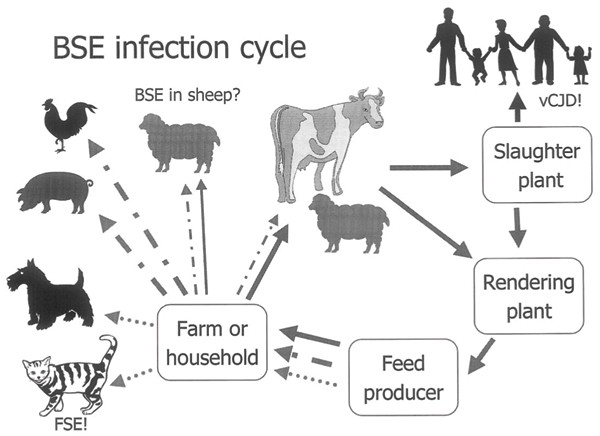Bovine Spongiform Encephalopathy (BSE)
Bovine Spongiform Encephalopathy (BSE)
Spongiform
encephalopathies (SEs) are degenerative disorders of the brain that occur in a
number of species. They are recognized by the clinical appearance of the
affected animal and the characteristic histological changes they produce in the
brain. One
of the common Spongiform encephalopathy is Bovine
Spongiform Encephalopathy (BSE),which mainly affect cattle. Bovine Spongiform Encephalopathy (BSE), widely
referred to as “mad cow disease,” is a progressive and fatal neurologic disease
of cattle. It is caused by an unconventional transmissible agent,
an abnormal prion protein. "Bovine"
means that the disease affects cows, "spongiform" refers to the way
the brain from a sick cow looks spongy under a microscope, and
"encephalopathy" indicates that it is a disease of the brain. The
infection spreads to cattle by the practice of feeding them abattoir waste and
offal which may have contained scrapie infected meat. A common sign of BSE in cows is
incoordination. A sick cow has trouble walking and getting up. A
sick cow may also act very nervous or violent, which is why BSE is often called
“mad cow disease.” Incubation period is usually four to
six years . Once a cow starts to show symptoms, it gets sicker and
sicker until it dies, usually within two weeks to six months. There is no
treatment for BSE and no vaccine to prevent it. A cow becomes infected
with contaminated feed that contains abnormal prion. People can get a version
of BSE called variant Creutzfeldt-Jakob disease (vCJD). 


Comments
Post a Comment